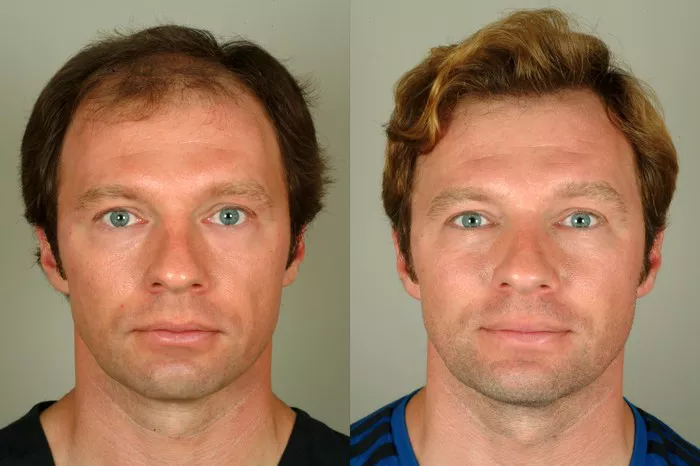In the world of hair restoration, the longevity of a hair transplant is a crucial concern for those considering the procedure. Understanding how long a hair transplant lasts is essential to set realistic expectations and make an informed decision about this life-changing treatment. In this comprehensive guide, we will delve into the topic, providing you with a clear insight into the various factors that influence the duration of a hair transplant’s effectiveness.
1. Initial Results: The Beginning of Your Hair Transplant Journey
Your journey with a hair transplant begins with the initial results, which can often be quite satisfying. After the surgery, you may experience some temporary redness and swelling, but within a few weeks, your newly transplanted hair will start to grow. This initial growth is a promising sign of things to come. However, it’s crucial to understand that the early stages are just the beginning of a more extended process.
a. Hair Growth Patterns: In the first few months following a hair transplant, you’ll notice that the newly transplanted hair falls out. This is a normal phase known as “shock loss.” The hair follicles are merely resetting, preparing to produce new, permanent hair.
b. Regrowth Phase: Typically, it takes about 3-6 months for the transplanted hair to start regrowing. During this time, the hair shafts will become thicker and more visible, creating a noticeable improvement in your appearance.
2. The Lifespan of Transplanted Hair: What to Expect
The longevity of a hair transplant varies from person to person. Several factors play a significant role in determining how long your transplanted hair will last. It’s essential to set realistic expectations as you embark on your hair restoration journey.
a. Genetics: Your genetic makeup is one of the primary factors influencing the duration of your hair transplant results. Hair loss patterns are often inherited, and your transplanted hair may follow a similar trajectory to your native hair. While some people may enjoy their results for a lifetime, others may require additional touch-up procedures in the future.
b. Maintenance: Proper hair care and maintenance are essential to prolong the life of your transplanted hair. Using specialized shampoos, avoiding excessive heat styling, and protecting your scalp from the sun can help preserve the quality of your transplanted hair.
3. Touch-Up Procedures: Ensuring Long-Lasting Results
If you find that the results of your hair transplant are not as long-lasting as you hoped, touch-up procedures can be an effective solution. These procedures involve adding more grafts to enhance the density of your hair or address areas that may have experienced further thinning.
a. Determining the Right Time: Deciding when to undergo a touch-up procedure is a personal choice. Some individuals may opt for touch-ups after several years, while others may go longer before considering additional grafts. Consulting with your surgeon is crucial to assess your specific needs.
b. Maximizing the Lifespan: Touch-up procedures can maximize the lifespan of your transplanted hair, helping you maintain a youthful and natural appearance.
4. Caring for Your Transplanted Hair: A Guide to Longevity
Proper care and maintenance are essential for preserving the lifespan of your hair transplant. Follow these guidelines to ensure your newly transplanted hair remains healthy and vibrant:
a. Gentle Shampooing: Use a mild, sulfate-free shampoo to cleanse your hair and scalp. Avoid harsh chemicals and aggressive scrubbing to prevent damage.
b. Protection from UV Rays: Shield your scalp and hair from the sun’s harmful UV rays by wearing a hat or applying a protective hair spray.
c. Regular Trims: Keep your hair at a manageable length to reduce stress on the follicles and promote overall hair health.
d. Stress Management: Stress can contribute to hair loss. Engage in stress-reduction techniques like meditation, yoga, or exercise to maintain the health of your transplanted hair.
5. The Role of Surgeon Expertise
Selecting a skilled and experienced surgeon is a critical factor in ensuring the longevity of your hair transplant. A knowledgeable surgeon will make precise incisions, place grafts strategically, and minimize trauma to the surrounding tissue, all of which contribute to the success and durability of the procedure.
See Also: When Can I Dye My Hair After Hair Transplantation: A Full Guide
6. Conclusion: The Longevity of a Hair Transplant
In conclusion, the lifespan of a hair transplant is influenced by a combination of factors, including genetics, care, and the expertise of your surgeon. While results can vary from person to person, with proper care and, if necessary, touch-up procedures, you can enjoy the benefits of your hair transplant for years to come. Remember to consult with a qualified hair restoration specialist to create a personalized plan that addresses your unique needs and expectations. A hair transplant can be a life-changing experience, and understanding how long it lasts is essential in making an informed decision.


